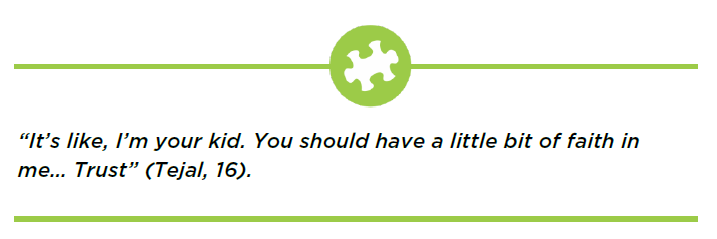By Samantha McAleese, research associate at MediaSmarts and
David Fowler, vice-president, marketing and communications at CIRA.
 If you’re a parent, it might feel like your kids are on a new app or platform like TikTok every other week. By the time you’ve wrapped your head around all the privacy and safety concerns of one app, they’re already on to the next.
If you’re a parent, it might feel like your kids are on a new app or platform like TikTok every other week. By the time you’ve wrapped your head around all the privacy and safety concerns of one app, they’re already on to the next.
Trying to keep up with young people’s online activities is not a new challenge –organizations like MediaSmarts have been researching how youth interact with the internet and technology since 2000. But what has changed the most over the years?
MediaSmarts’ latest report, Talking to Youth and Parents about Online Resiliency funded by CIRA, the Canadian Internet Registration Authority, outlines findings from focus groups with youth and parents. Some adults might be surprised by how deeply aware youth are of both the pitfalls and benefits of technology use. Young people, often referred to as ‘digital natives,’ are savvy and connected, but navigating the ever-changing digital landscape remains tricky for them at times and they need support and guidance from the adults in their lives.
Our research shows that there are countless ways in which the internet has changed how young people behave, which can be grouped into three broad themes identified in our latest report:
First, today’s youth share the same concerns as their parents about overuse or being ‘too distracted’ by digital technology. That said, parents felt their kids lacked the self-control to limit their own screen time and set strict rules in place to mitigate this. Disagreements between youth and adults about these rules are a frequent source of frustration (which you’re probably very familiar with if you have a teen in the house).
Secondly, young people are pushing back against stereotypes about how they use digital technology. While adults worry that screens are replacing face-to-face interactions, what we heard from youth was quite the opposite: they acknowledge that social media makes it easier to keep in touch and share interesting or funny content with friends, but many use apps and online platforms as a way to make plans to meet and spend time with their peers in person.
A continued preference for face-to-face interactions isn’t limited to social relationships. When it comes to the classroom, students placed a high value on the importance of a ‘human explanation’ and the interaction and support they get from teachers.

Lastly, most youth we met with felt that constant surveillance in the classroom and at home on their digital devices was “creepy,” and wish their parents and teachers would trust their ability to safely use digital technology. Although they understand adults’ fears about the online world, the controls they are placed under make it difficult to use technology for creative self-expression or community engagement. These controls also make it less likely for youth to make mistakes and learn from them (and for youth to turn to adults when they encounter problems).
These are just a few examples of the kinds of contradictions that exist when it comes to the viewpoints of youth and adults on technology use. What’s clear is that integrating new digital technology into our lives is all about balance, trust and support. Encouraging open dialogue between youth and adults around topics like cyberbullying, online hate, misinformation and privacy issues is key to maintaining this balance. These initial conversations also tell us that we have much more to learn from young people about how we can help them be resilient internet users in the future.

As the next phase of the research project continues with a survey of 5,000 students across Canada, MediaSmarts will keep engaging with youth and the folks around them to provide a chance to talk about what they think about the digital landscape and how they navigate the opportunities and perils it presents. We need to keep listening to young people who are uniquely positioned to let adults know what the online world looks like and how we can help them make the most of it.
Samantha McAleese is co-author of the Talking to Youth and Parents about Online Resiliency report and the research associate at MediaSmarts.
David Fowler is the vice-president, marketing and communications at CIRA, the Canadian Internet Registration Authority, where improving digital literacy for Canada’s youth is a key priority.
